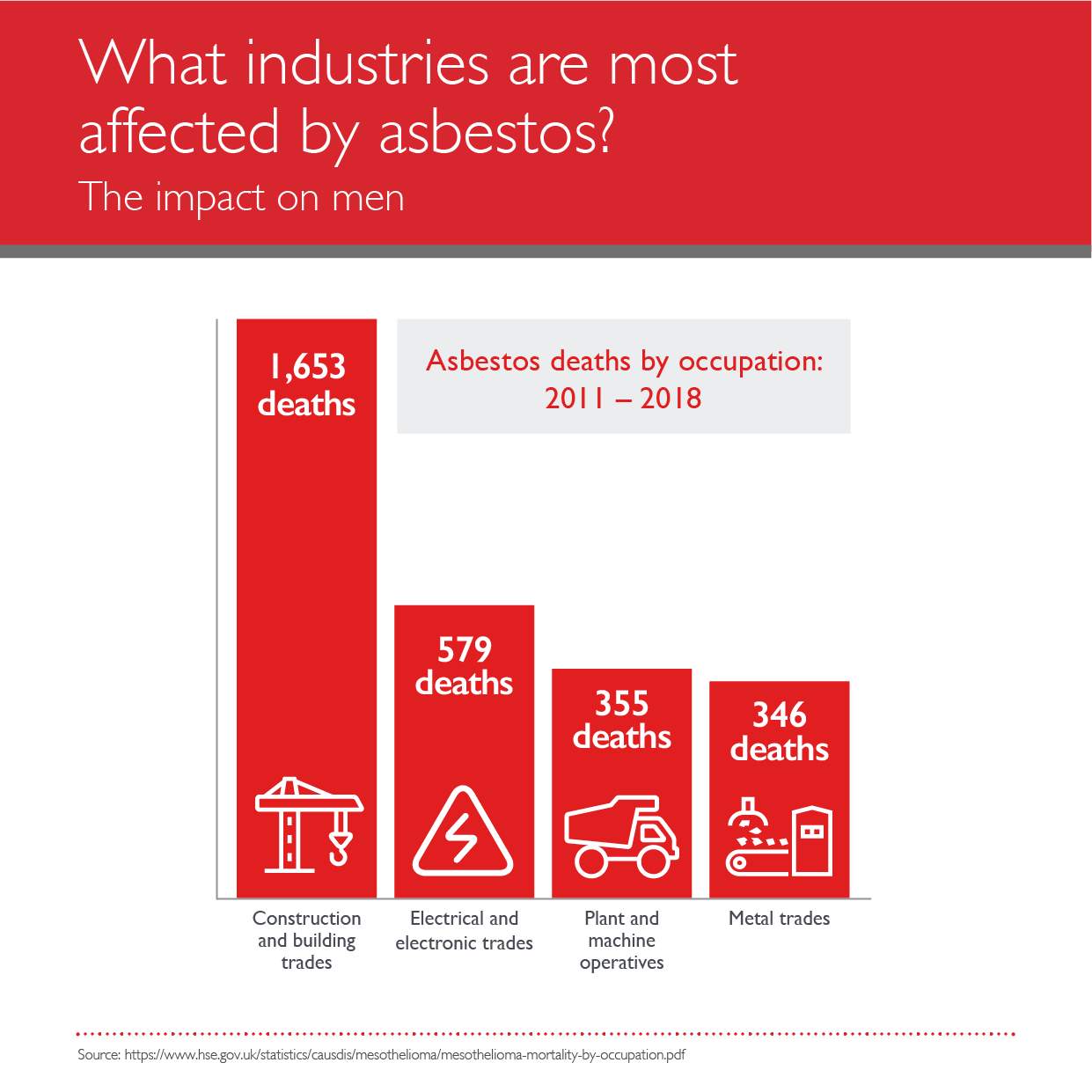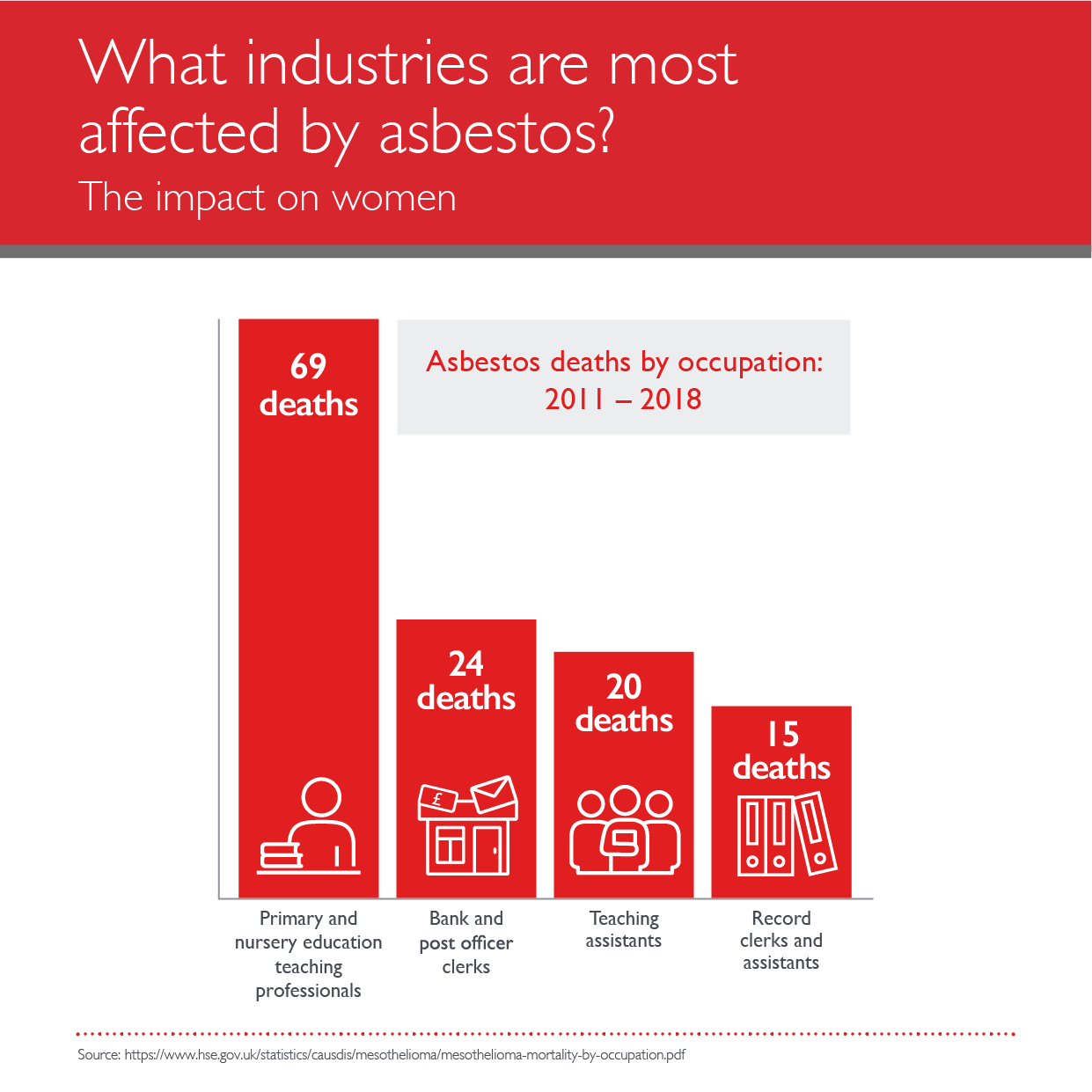The use of asbestos in the workplace throughout the 20th century continues to devastate lives across the UK. Around 2,500 people die from mesothelioma, which is an asbestos-related disease, each year, and there is no indication that the numbers are going to decrease anytime soon.
What industries used asbestos?
There are certain workers that were more at risk of coming across asbestos than others. An example is construction workers. We reveal the effects asbestos has had on workers in the construction industry here.
Asbestos was also widely used in school buildings, hospitals and offices, meaning that people working in these locations may also have been exposed to the dangerous substance at some point in their lives.
Who is most at risk of asbestos exposure?
Any worker who handled asbestos, or products made from asbestos, without adequate protection could have breathed in the asbestos fibres and face the risk of later developing an asbestos-related disease, such as mesothelioma. The highest risk was for laggers and labourers who often handled asbestos daily.
It can also affect those who didn’t work directly with asbestos. Thompsons Solicitors has supported a number of people who were exposed to asbestos second hand, either through washing the dusty clothes of colleagues and family members who had been exposed to asbestos, or working near asbestos regional teams.
The official statistics show who is most at risk of developing an asbestos-related disease, the image below details those industries most affected by asbestos, based on the number of mesothelioma deaths by profession between 2011 and 2018.


